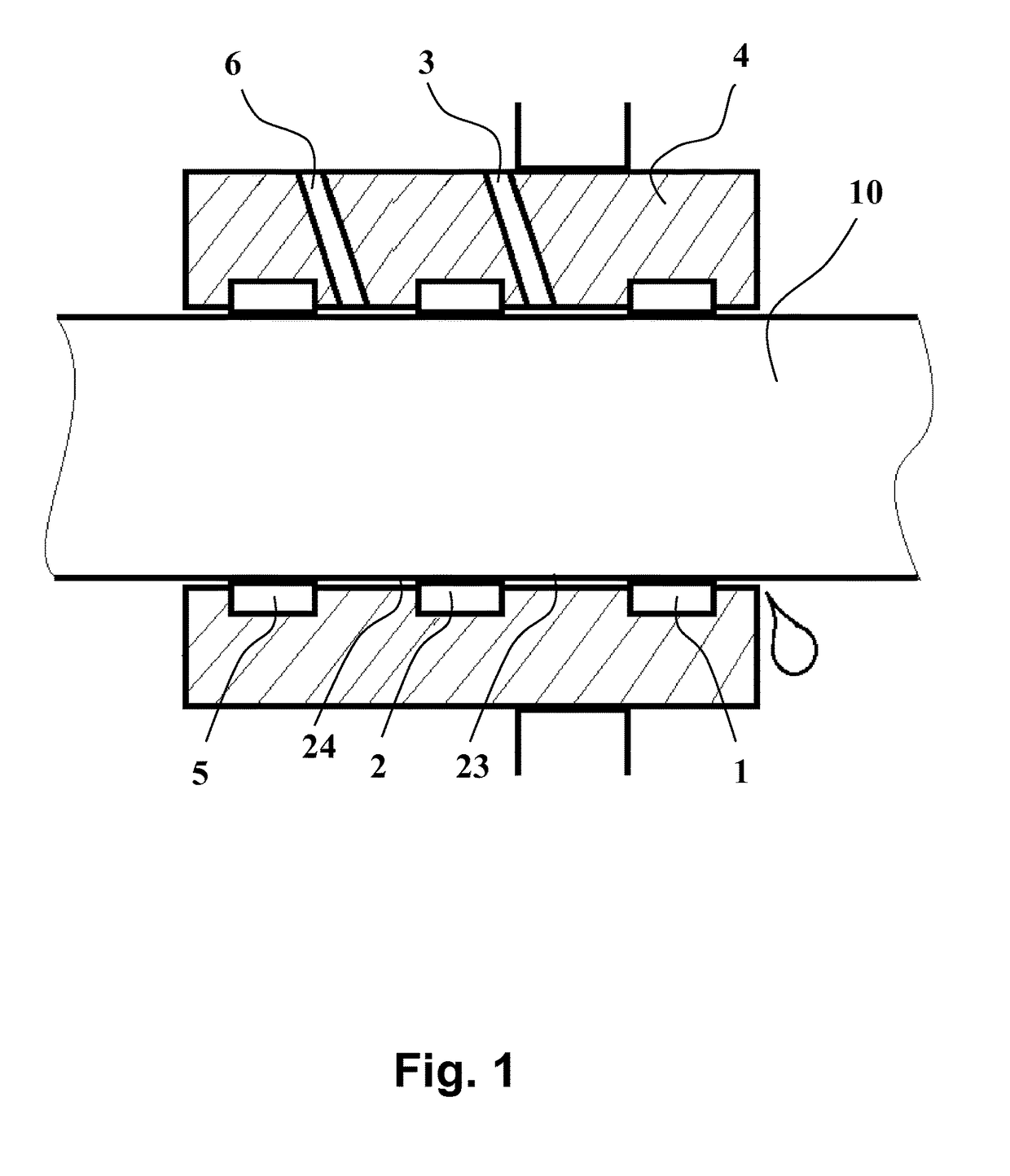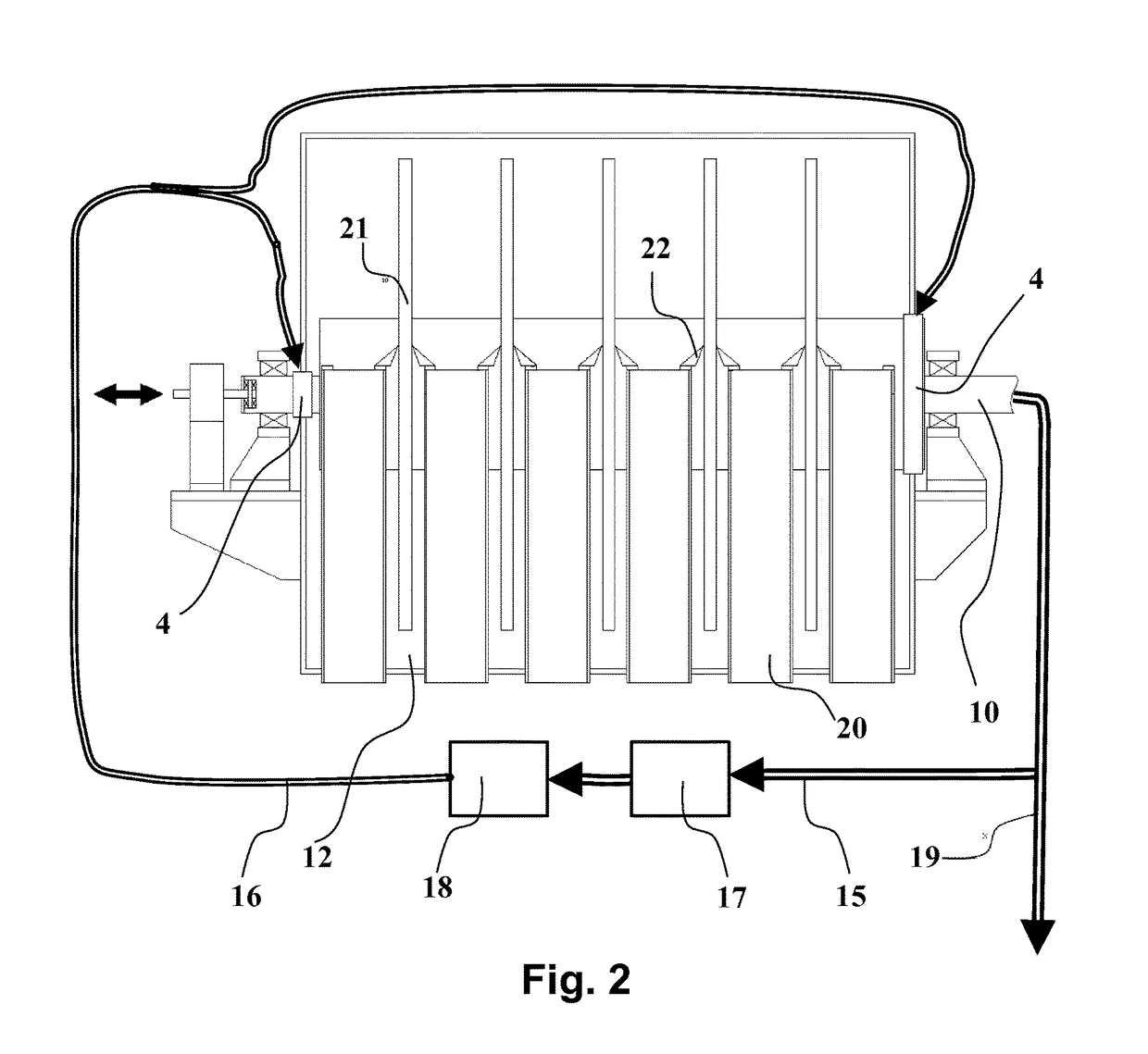A method of feeding a sealing medium into a liquor filter and a liquor filter
a technology of sealing medium and liquor filter, which is applied in the direction of filtration separation, lime production, separation processes, etc., can solve the problems of increasing the capacity of the filter, increasing the leakage of sealing water or the need for drainage, and increasing the service life of the outer seal. , to achieve the effect of preventing the leakage of alkaline sealing liquid out of the apparatus, reducing the required feeding pressure, and efficient pumping of sealing medium
- Summary
- Abstract
- Description
- Claims
- Application Information
AI Technical Summary
Benefits of technology
Problems solved by technology
Method used
Image
Examples
Embodiment Construction
[0024]Axial seals 1, 2 according to FIG. 1, which form an innermost pair of seals, are commonly used in the apparatuses of the chemical pulping industry for sealing the shaft with respect to the frame of the apparatus, such as with respect to the basin of the filter. Typically, sealing water has been led in between the seals 1, 2 via a sealing medium channel 3. The innermost seal 1 seals the shaft 10 on the side of the space to be sealed, i.e. on the side of the filter. The outer seal 2 is located outer than the innermost seal 1, on the side of the outer surface. A pressurized sealing medium channel 3 leads through a seal housing (sealing sleeve) 4 into the innermost sealing zone formed by these seals 1, 2 and the space 23 between them. Leakage from between the innermost seal 1 and the shaft 10 is not very detrimental in view of operation of the seal, but it keeps the innermost sealing surfaces clean despite the corrosive and abrasive impact of the substance inside the filter. Since...
PUM
| Property | Measurement | Unit |
|---|---|---|
| Pressure | aaaaa | aaaaa |
| Flow rate | aaaaa | aaaaa |
| Level | aaaaa | aaaaa |
Abstract
Description
Claims
Application Information
 Login to View More
Login to View More - R&D
- Intellectual Property
- Life Sciences
- Materials
- Tech Scout
- Unparalleled Data Quality
- Higher Quality Content
- 60% Fewer Hallucinations
Browse by: Latest US Patents, China's latest patents, Technical Efficacy Thesaurus, Application Domain, Technology Topic, Popular Technical Reports.
© 2025 PatSnap. All rights reserved.Legal|Privacy policy|Modern Slavery Act Transparency Statement|Sitemap|About US| Contact US: help@patsnap.com



